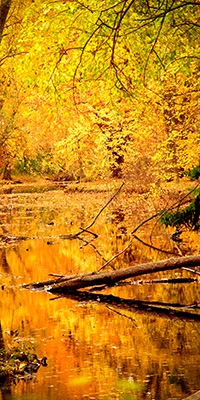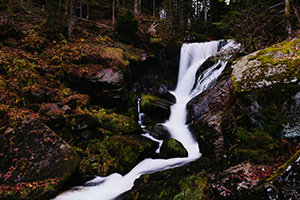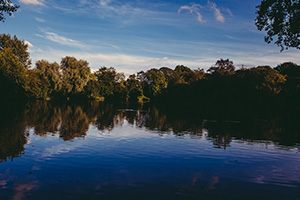Whether you’re a student filming for a university project, you work in the industry or you’re an aspiring filmmaker, you don’t always have to travel far and wide to the world’s most exotic locations to capture the perfect picture.
The local woods, a nearby field or your favourite beach can all make for fantastic settings when taping in the wilderness.
However, whilst it makes for some incredible shots, recording outside has its fair share of challenges; from preparing your gear for harsh conditions, wet or dry, to choosing the right equipment to film across various terrains.
In this article we will explore some of the most common problems of filming outside that you can prepare for, as well as some of the best technology and techniques to use when you get the cameras rolling in the great outdoors.
Adverse Weather
Being prepared for adverse weather conditions is crucial. A powerful blast of wind can knock out your sound and heavy rain can damage your camera or render it inoperable.
Rain

First things first, you’ll want to check the weather reports for the day (or few days) ahead. If harsh rain is predicted, you’ll need to review your schedule and either make a few changes or postpone for another time accordingly.
While filming in wet conditions it is imperative that you protect your camera from moisture at all times. Always dry your hands and wipe down all lenses and electronics before and after use. When your shoot is over, store your gear next to a nearby AC unit to dehumidify it before packing away.
However, if rain is what you need for your scene then simply bring along some waterproof covers to tackle any moisture problems your video equipment might encounter.
Wind
To combat gusty winds consider investing in a set of stabilisers for your kit; not only will this help to create a more stable and focused picture, it will significantly reduce the risk of damaging you camera should it hit the ground.
In windy weather it can be difficult to maintain a strong posture when recording. This can have a substantial impact on the focus and picture your camera yields. For more stable and improved cinematography consider taking an attachable focus enhancer with you for the best picture possible.
Don’t forget to account for your audio. Bad conditions can have a detrimental effect on the quality of the sound you record. Before committing to a shoot, briefly test your audibility by taping for a couple of minutes. Then listen back through a set of headphones to assess its quality and decide whether or not you should continue.
Heat
In hot conditions your tech might overheat; especially if it is exposed to the sun for prolonged periods of time. To ensure that this isn’t an issue, make sure that, at the very least, you pack a cloth to help block out the sun and always be mindful of how long you’ve left your equipment in direct sunlight.
Difficult Terrain
You may encounter some rough terrain while trying to reach your chosen location. Whether it’s climbing atop high cliffs or traipsing through muggy swamps, rocky roads or grassy knolls, you’ll need to plan ahead for the safety of yourself and your kit.
Capturing the perfect shot can be quite daunting at times; filming on loose ground or up high can be extremely dangerous. To better protect yourself (and your camera) use accessories like rigs, sliders, jibs and cranes for added support in those hard to reach shots. Failing that, you can always use the zoom function to put yourself out of harm’s way.
For filming on the go, bringing along a DSLR camera can significantly simplify your shoot. Its lightweight and compact design allows for optimum manoeuvrability throughout any environment. If you have a specific shot that you need to get by ascending a tall tree or by delving deep into a series of caves a powerful yet portable camera like the DSLR will get you there.
Before leaving, it is also worth thinking about how you intend to cart around your video-camera, sound recorders, rigs and other supplies and accessories whilst you’re on the move from scene to scene. Purchasing a portable safety case will make it much easier to transport and protect your apparatus.
Extra Planning
A little extra planning never hurt anyone.
Heading off to a shoot ill-prepared can bring about a number of problems; planning ahead will make sure that you have everything you need should anything go wrong.
Batteries
While batteries can be expensive, they are a crucial addition should your camera’s power supply deplete. Prior to leaving, pack a couple of sets of extra batteries and check that they are fully charged.
If you are filming for long periods of time, look into buying an in-car charger or portable power unit so that your trip does not suffer.
If this isn’t an option, there are a few tricks you can employ to help conserve power and increase your roll time:
- Do not record for over-extended periods of time
- Ensure that your camera’s standby feature has been enabled
- Manually focus your shot rather than using the camera’s auto-focus function
- Film around the power of your battery, check your schedule and only cover the shortest scenes that you have left
- Set your camera’s resolution settings to 1920 x 1080
Spare Cables
You should also plan ahead by assessing your critical cables. Are there any that could potentially stop your shoot if they became damaged? If so, purchase a few spares so you can keep the cameras rolling.
Tools & Accessories
You can never truly predict what’s going to happen at any given time. Who knows, somewhere along the line your equipment may become damaged, and in need rapid repair.
Whatever the case, just be sure to bring along the following to help for a quick and easy fix should disaster strike:
- Duct Tape
- Swiss Army Knife
- Screwdriver kit
- Pliers
Hopefully this guide has provided you with some helpful advice so that you’re much more prepared for the next time you are taping outdoors. For some more top tips, be sure to check out this video by GoOutdoorsTV:
If you have any experience of filming outside and would like to share what gear you find works best, let us know in the comments section below.
Author Bio
This article was written on behalf of GripUp.com. The one stop shop for all your video camera and DSLR needs.
Lakeside image courtesy of Unsplash | Waterlogged Forest image courtesy of Gratisography | Waterfall image courtesy of Littlevisuals | Lake image courtesy of Littlevisuals | Swiss Army Knife image courtesy of Bigstock



